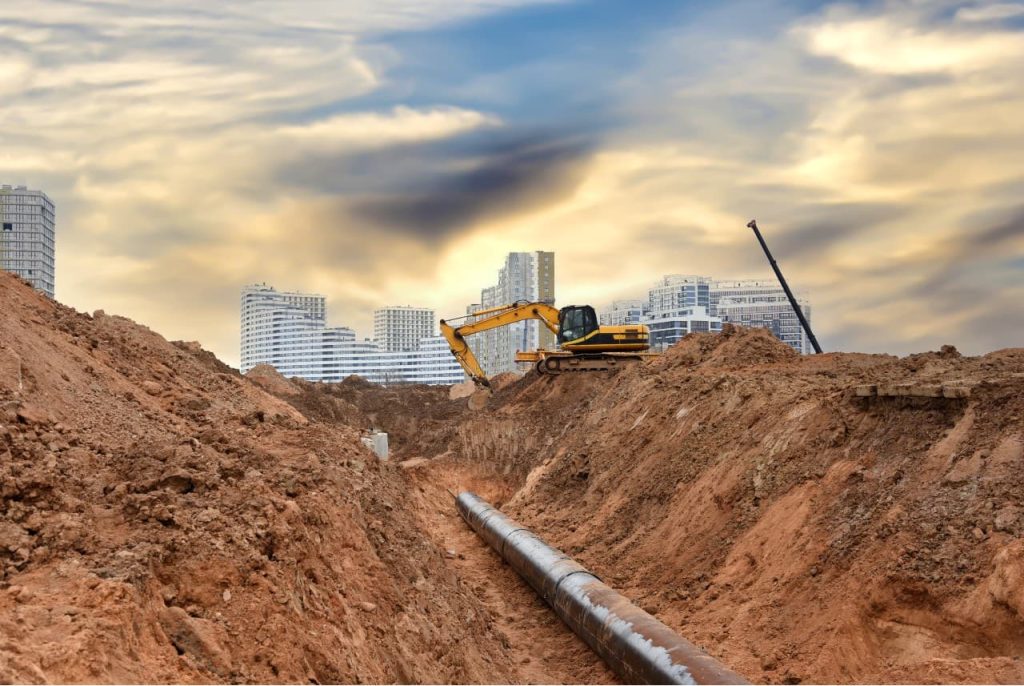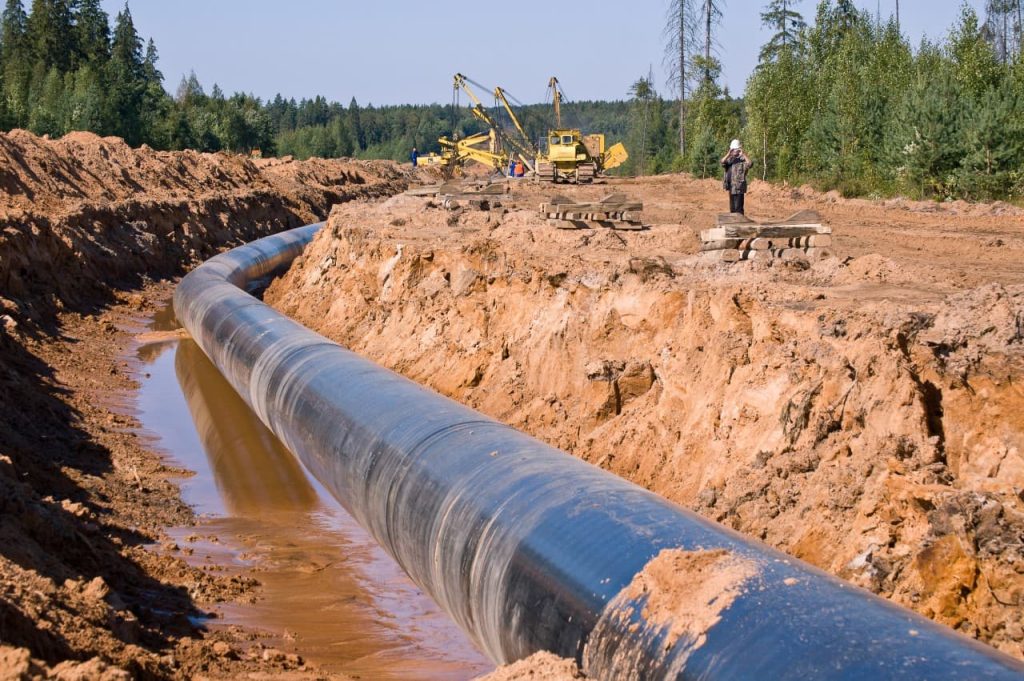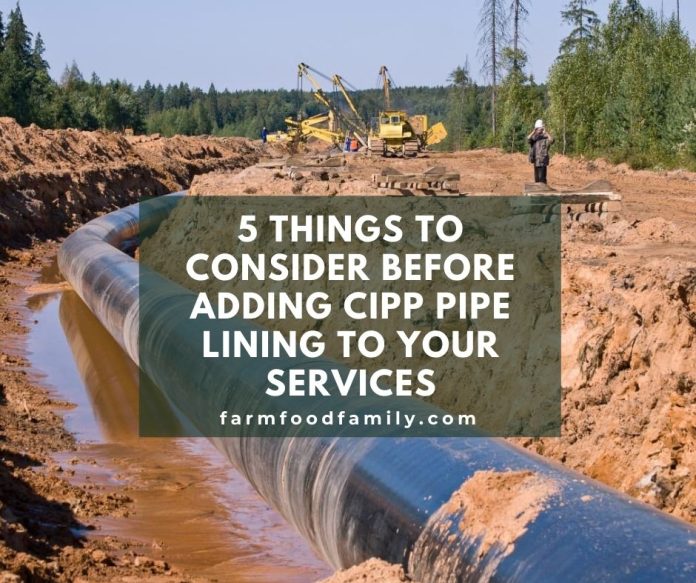5 Things To Consider Before Adding CIPP Pipe Lining To Your Services
Cured-in-place pipe (CIPP) is an excellent investment for your property’s pipe and sewer system. These pipe lining solutions can help many property owners with sewer or other pipe issues. Likewise, CIPP pipe lining allows you to fix pipe issues without digging up and replacing the complete sewer system. However, before deciding on this matter, take note of these 5 things to consider before adding CIPP pipe lining to your services:
In this article:
1. Know How The Installation Process Works

As soon as an hour has passed, the old pipe’s structural integrity is restored by the CIPP process. Trenchless construction may be accomplished more quickly and efficiently than open-cut construction as it doesn’t need to dig trenches. When you look for licensed CIPP lining contractors, you’ll notice that they may use the CIPP installation technique as detailed below:
- Clean the host pipe: The host pipe is entirely covered by the new liner. Dirt and debris must be cleared to allow for the appropriate installation of the CIPP liner against the pipeline’s wall. CIPP generally needs extensive pipeline cleaning.
- Set up flow management or bypass system. To install CIPP, you’ll need a dry pipe. Plugs are the only option for smaller diameter applications. In certain cases, a temporary bypass pumping operation may be required. This is done by pumping the water out of the area where the repairs occur and redirecting it elsewhere. Sewage vacuums may be your best choice if a bypass is required to keep the pipes free.
- The CIPP liner should be put in place now. Inversion and pull-in-place are the most frequent methods for installing the CIPP liner. Liner is fitted into the air or water-pressurized device that extends the whole length of the pipeline with a resin-impregnated tube for inversion. Instead of being pushed towards the end access, a pull-in-place liner is pulled.
- UV light or heat may be used. Heat or UV light is used to harden the resin and make a solid pipe once it has been appropriately positioned inside the existing pipeline.
- Reestablish connections between adjacent brain regions. Lateral connections may be reconnected after the pipe has hardened and is suitable for use.
- Make sure the product is of high quality. Pipeline specialists should conduct quality checks before leaving the site to guarantee the restored pipe is safe to use.
2. Learn The Basic Principles
To produce final CIPP products, all automated systems follow the same essential principles. Likewise, to suit the needs of cured-in-place materials and textiles, all systems must have a heavy-duty unwind.
The product is moved through the system by a heavy-duty puller. A guiding and web control closed-looped system that ensures appropriate tension and alignment of the product into the sewing and welding sections of the machine is available.
Welding, sewing, and extruding are all methods of seam bonding that may be used in conjunction. So, when a robust, consistent, and high-quality output system is available, a product that can be dispatched to a client on-demand or for keeping as stock is guaranteed.
3. Limitations Of CIPP Pipe Lining

CIPP pipe liners aren’t usually stocked and are made to be specifically designed for each project. They must be installed according to the exact specifications of the pipeline. The curing time depends on the diameter and curing system. Existing pipeline obstructions, like projecting laterals, must be removed before installation.
Cost should also be compared with other methods, such as shotcrete, spiral wound pipe, and slip lining. These methods can provide the same design solution in certain situations.
In addition, the liner material for standard sizes is usually felted fabric, which doesn’t go well around bends. For pipes with bends, the lining is generally made from a woven fabric that allows it to go around the turn without wrinkling.
Keep in mind that after CIPP repair, a line can’t be cabled or snaked by a machine and must be cleaned by hydro-jetting (also known as high-pressure water blasting).
4. Know The Various Options
When shopping for a CIPP pipe lining system, it’s critical to be aware of the numerous completed liner alternatives offered by different manufacturers. Depending on the materials’ quality and the production method, you may find a wide range of products on the market.
Suppose you’re installing a resin system. In that case, you’ll need to think about the various liners available when purchasing polymer coating. Choosing a closure mechanism for the liner is an additional consideration.
Sewn and flame-bonded closures are two alternatives to think about. Welded overlap seams employed in blind shot liners and pull-in-place applications are examples of current approaches.
5. Manufacturing Factors To Consider
There are various factors to consider before deciding on the liner to be used in your project.
Moreover, an extensive range of options to manufacture CIPP is available in the industry. Diversity, different seam configuration possibilities, pipelining size, huge fabric handling capacity, and consistent quality output are all required in a production system. Other things to consider are the following:
- number of layers
- kind of seam
- resin absorption at the seam
- capability of concurrently welding numerous rolls of the same or different thickness
- placement of each seam within the several layers
- range of diameters
- made-to-order possibilities
- convenient shipping packaging
- capacity to flip without compromising the resin’s integrity at the seam
- capacity to stitch or weld a variety of materials, including nonwovens and felt liners covered with polypropylene (TPO), polyurethane (TPU), polyethylene, or PVC
Lastly, consider working with a liner manufacturer to build a unique solution to guarantee that you choose the proper liner for your project. It’s possible to collaborate with the most reputable company to find a CIPP pipe lining system that’s just right for your application.
Takeaway
Check out this article before adding CIPP pipe lining to your services. While certain subsurface uses for CIPP pipe lining make sense, the CIPP isn’t a comparable option to pipe replacement for drain, waste, and vent pipes inside a structure. Therefore, it’s always best to do research on all available choices, including repiping, before making an investment decision.

